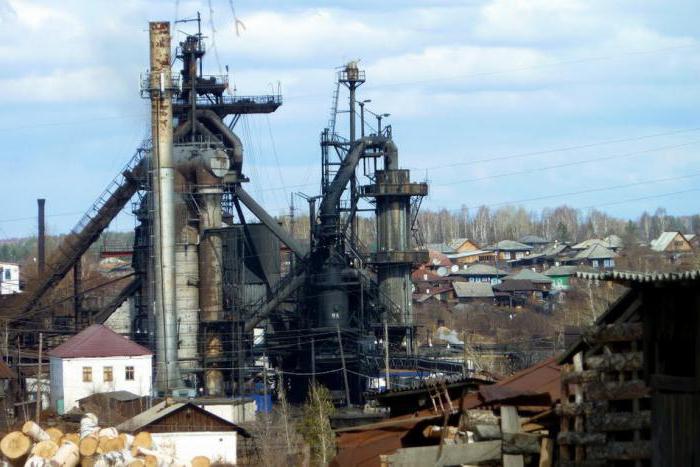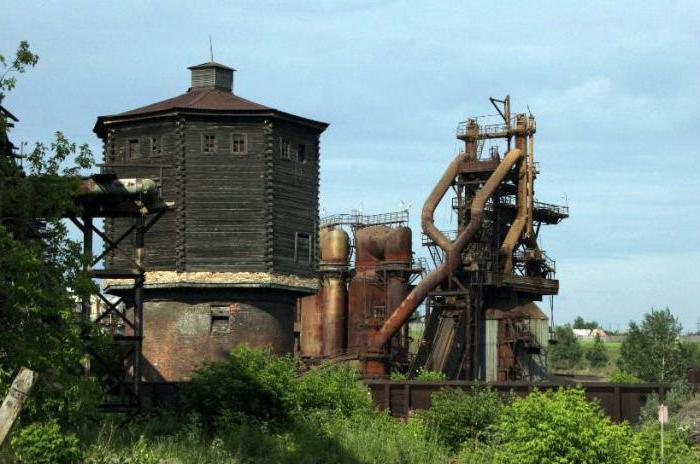The Alapaevsky Metallurgical Plant (AMZ) was founded under Peter I in 1704 and is one of the first-born iron foundries in the Urals. The company has come a long thorny path from a major supplier of high quality ferromanganese and cast iron to a bankrupt plant.
Highest decree
After the conquest of Siberia by Ermak, the settlement of the Trans-Urals began with the inhabitants of Russia and the development of the countless wealth of the region. At that time, the main tract through the mountains passed in the region of the middle Urals: from the Stroganov possessions to the Verkhoturye - a large settlement in Siberia. Ironmaking initially developed along this route. The surrounding area was rich in ores with a high iron content, and the abundance of coniferous forests contributed to the smelting of metals.

At the beginning of the XVIII century, Peter I ordered the construction of an iron-making state factory on the Alapaiha River, which subsequently gave rise to the city of Alapaevsk in the Sverdlovsk Region. Frequent wars with neighbors, especially with the Swedes and the Crimean Khanate, required a lot of metal for casting cannons and cores. Therefore, the construction went briskly. A few years later, 2 blast furnaces, a foundry, hammers, a drill for boring gun barrels worked at the plant. In order to process the cast iron of the Alapatievsky plant, six hammer mills were built in the okrug.
Expansion
Due to the frequent demolitions of the factory dam in 1778, it was decided to transfer part of the production upstream of the Alapaihi. The volume of the new dam of the Alapaevsky Metallurgical Plant was twice the old. Thus, the company no longer lacked water during the off-season. At the new Verkhnealapaevsky site, ingots of cast iron produced by the Nizhnealapaevsky site were processed. Up to 25,000 pounds per year were made of strip iron alone.
Neivo-Alapaevsky Plant
After 120 years of operation, the capacities of the old Alapaevsky Metallurgical Plant were finally exhausted. In 1825, the construction of a new site began, where it was planned to install the most high-performance equipment for that time. The Neivo-Alapaevsky plant launched the first blast furnace, the largest in the Urals, on February 25, 1828. A blast furnace produced 1,200 pounds of high-quality cast iron per day. Six months later, the second furnace started working.

In 1837, the inventor I.E.Sofonov built the first water turbine in Russia for a sheet-rolling mill. By the middle of the century, the number of employed workers exceeded 4,000. A new breakthrough in development occurred in the 1890s. A power station was built, a 92-mile narrow gauge railway connected the Alapaevsky Metallurgical Plant with mines, and a 15-ton open-hearth furnace was launched. By 1900, 20 steam engines were involved in production, and two more 25-ton open-hearth furnaces were launched. After 10 years, the 15-ton furnace was replaced by a 50-ton one.
Soviet era
The plant somehow survived the civil war. In 1925, its gradual modernization began: the rolling mill was replaced, the narrow gauge railway was restored and increased to 308 km. Surprisingly, even in the most difficult years of the Second World War, reconstruction of production sites was carried out. Have been built and updated:
- processing plant ;
- metal construction site;
- turning shop;
- gas pipeline;
- filling machine;
- Blast furnace at 290 m 3 .
Metallurgists of the Alapaevsky Metallurgical Plant mastered the smelting of alloy steels, bimetals, ferromanganese. In 1957, AMZ was transformed into a plant, which included the Verkhnesinyachikhinskoye, Neivo-Shaitanskoye enterprises and a number of mines. In 1993, the production was corporatized. OJSC AMZ employed over 2700 people. By the end of the 80s, the equipment was completely outdated; a number of workshops were suspended back in 1986. The plant gradually reduced the volume of work, until in 2005 it finally stopped.
Attempted rebirth
Until 2010, AMZ OJSC was in a deplorable state. Former owners completely stopped all production facilities. In 2011, the plant was bought by the NOVAEM Group of Companies, a new life began not only of the enterprise itself, but also of the city as a whole. Abandoned workshops were actively restored, blast furnaces were being prepared for launch.
The NOVAEM company has invested significant funds in the reconstruction of blast furnaces and the enterprise as a whole. On November 29, 2011 at the Alapaevsky plant, a blast furnace launch ceremony took place. It was assumed that the plant should produce annually at least 36,000 tons of ferromanganese or 120,000 tons of high-quality cast iron. However, after 3 years, the NOVAEM company itself was on the verge of closure, the fate of AMZ was a foregone conclusion.